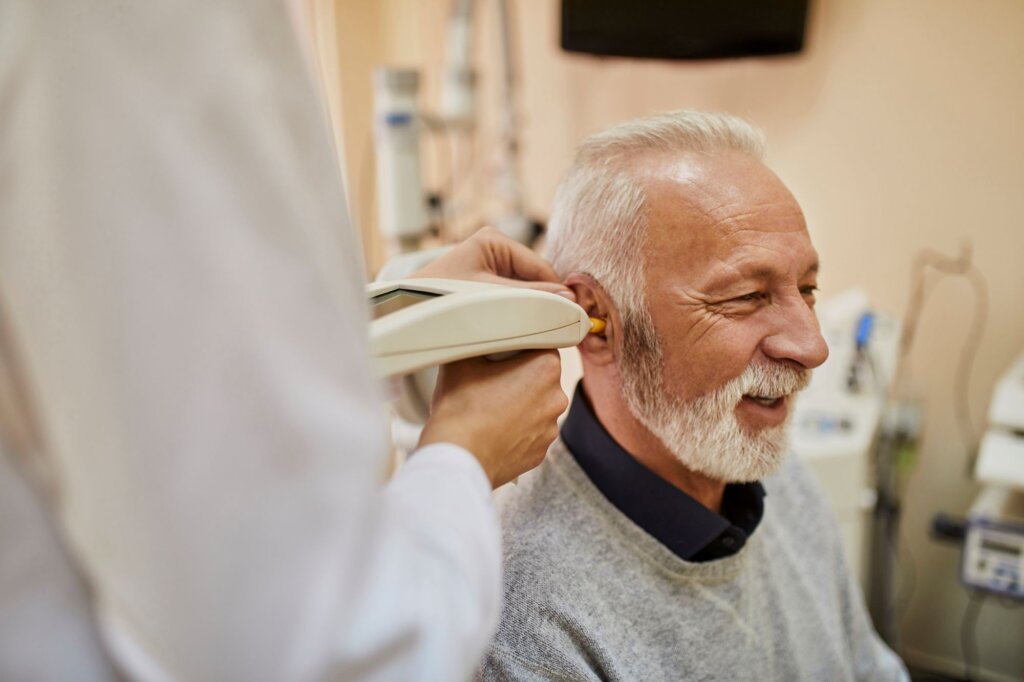If you’ve been experiencing hearing loss, getting fitted for hearing aids can be a life-changing step toward clearer conversations, better social interactions, and improved overall well-being. If this is your first time wearing hearing aids, you might be wondering what the process looks like.
Hearing aids aren’t a one-size-fits-all solution. Finding the right fit requires careful evaluation, customization, and adjustment. Here’s what you can expect when getting fitted for hearing aids.

Step 1: Comprehensive Hearing Evaluation
The process begins with a hearing test conducted by an audiologist or hearing specialist. This test assesses the degree of your hearing loss, the frequencies (high or low pitches) you struggle to hear, and how well you hear speech in different environments. After you receive your results, your audiologist will walk you through your hearing aid options that fit your needs best.
Step 2: Choosing the Right Hearing Aids
Your audiologist will help you find the best hearing aid style, fit, and technology for your lifestyle and level of hearing loss. Common types include:
- Behind-the-ear (BTE): A popular option with a small device behind the ear connected to an earpiece inside the ear.
- In-the-ear (ITE): A custom-molded device that sits in the outer ear.
- Completely-in-canal (CIC): A nearly invisible option that sits deep inside the ear canal.
Beyond style, your audiologist will also consider features like background noise reduction, Bluetooth connectivity, and rechargeable batteries.
Step 3: Custom Fitting and Adjustment
Once you’ve chosen your hearing aids, they’ll be programmed and adjusted to match your hearing profile. This step is to make sure the hearing aids sit comfortably in or around your ears. This process also checks that the hearing aids are providing clear and natural sound in different environments without being too loud or overwhelming.
Your audiologist will also show you how to insert, remove, and care for your hearing aids to keep them working properly.
Step 4: Getting Used to Your New Hearing Aids
Hearing aids can take some time to adjust to, especially if you’ve experienced hearing loss for a while. At first, sounds may seem louder or sharper than expected. Your brain needs time to relearn how to process sounds, so it’s normal to notice background noises you previously missed, experience mild discomfort as your ears adjust, and even feel like your own voice sounds different. Your audiologist may schedule follow-up appointments to fine-tune the settings and make sure you’re comfortable with your new hearing aids.
Step 5: Ongoing Care and Maintenance
Hearing aids need regular maintenance to function properly. Your audiologist will guide you on cleaning and storage methods, battery care or charging instructions, and how often to schedule follow-up visits for adjustments or long-term care. With the right care, your hearing aids can improve your hearing and quality of life for years!
Embracing Clearer Hearing
Getting fitted for hearing aids is a personalized process that ensures the best fit, comfort, and performance for your needs. While it may take some time to adjust, the benefits of better communication, increased confidence, and an improved quality of life are well worth it.
If you think you might need hearing aids, scheduling a consultation with a local audiologist is the first step toward hearing more clearly and reconnecting with the world around you.
This article is meant for informational purposes only and does not contain professional health advice.
